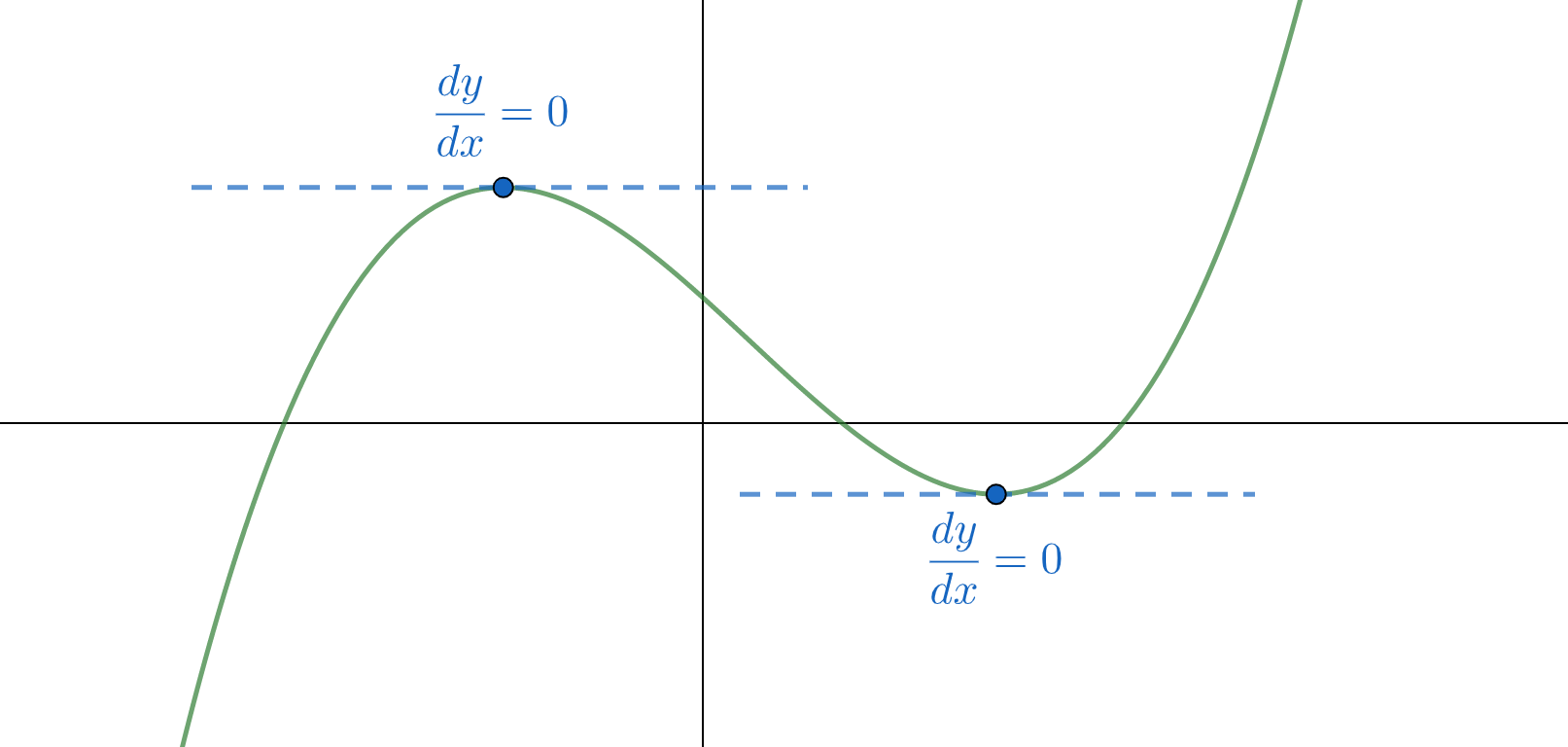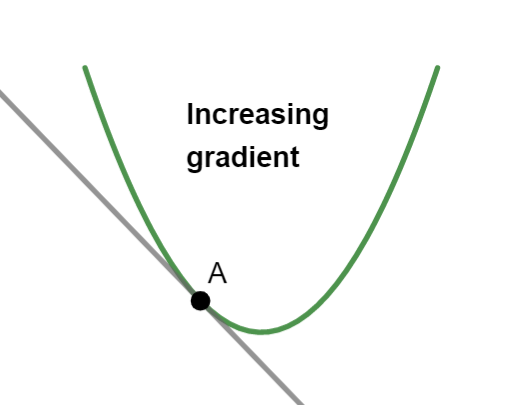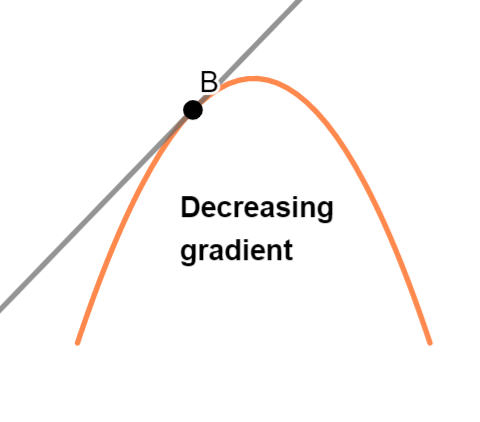At a local maximum point or a local minimum point, the gradient satisfies
You can see this geometrically because the tangent is horizontal:

Thus, in order to find these maximum and minimum points, we can solve the equation
Collectively, maxima and minima are known as turning points.
Classifying turning points
Once we have found a turning point, how should we decide if it is a maximum or a minimum turning point?
To do this, we consider whether the gradient of the curve is increasing:
To do this, we must consider the rate of change of the gradient function,
The reason we write
The second derivative test
If
then the gradient is increasing, so we have a minimum point: 
then the gradient is decreasing, so we have a maximum point: 
Let's try it out!
Find the turning points of the curve
and determine the nature of the turning points.